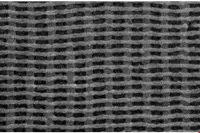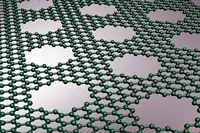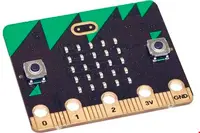Electronics News
Archive : 24 January 2016 год
 An MIT research team has described a first technique for stacking layers of block copolymer wires in such a way that the wires in one layer orient themselves perpendicularly to those in the layer below. According to the team, this ability to produce ‘mesh structures’ could make self assembly a more practical way to manufacture memories and optical chips, as well as future processors.
An MIT research team has described a first technique for stacking layers of block copolymer wires in such a way that the wires in one layer orient themselves perpendicularly to those in the layer below. According to the team, this ability to produce ‘mesh structures’ could make self assembly a more practical way to manufacture memories and optical chips, as well as future processors.
The constituents of a block copolymer are chosen for their chemically incompatibility and their attempts to push away from each other causes them to self organize.
The MIT researchers selected one carbon based and one silicon based polymer. In their efforts to escape the carbon based polymer, the silicon-based polymers fold in on themselves, forming cylinders with loops of silicon-based polymer on the inside. When the cylinders are exposed to an oxygen plasma, the carbon based polymer burns away, while the silicon oxidises to leave glass-like cylinders attached to a base.
A second layer of cylinders can be created by repeating the process, using copolymers with slightly different chain lengths. The cylinders in the new layer naturally orient themselves perpendicularly to those in the first.
If the surface on which the first group of cylinders is formed is treated chemically, the cylinders will line up in parallel rows. The second layer of cylinders will then form parallel rows, perpendicular to those in the first.
But if the bottom layer of cylinders forms haphazardly, the cylinders in the second layer will maintain their relative orientation, creating their own elaborate, but perpendicular, patterns.
While the glass-like wires are said not to be directly useful for electronic applications, the team thinks it might be possible to seed them with other molecules, which would make them electronically active, or to use them as a template for depositing other materials.
Patrick Theofanis, an Intel engineer, said: “In general, the ability to pattern square holes is very useful. If you think of the back end of our chips, we have the back end wiring and then the interconnect layers between those back-end metal layers; that’s where you’d like to be able to punch through holes and connect one layer to the next one. It’s an attractive technology because the aspect ratio is very tunable.”
Author
Graham Pitcher
Source: www.newelectronics.co.uk
 Scientists from UCLA’s California NanoSystems Institute have created a graphene sheet with minuscule holes that provides an effective way to place molecules in specific patterns.
Scientists from UCLA’s California NanoSystems Institute have created a graphene sheet with minuscule holes that provides an effective way to place molecules in specific patterns.
Led by Professor Paul Weiss, the researchers placed the sheet on a gold substrate, allowing molecules to attach to the gold exactly where the scientists wanted them, in the process creating patterns that control the physical shape and electronic properties of nano devices.
“We wanted to develop a mask to place molecules only where we wanted them on a stencil on the underlying gold substrate,” Prof Weiss said. “We knew how to attach molecules to gold as a first step toward making the patterns we need for the electronic function of nanodevices. But the new step here was preventing the patterning on the gold in places where the graphene was. The exact placement of molecules enables us to determine exact patterning, which is key to our goal of building nanoelectronic devices like biosensors.”
The advance is believed to make the creation of nanoelectronic and nanobioelectronic devices -- including biosensors – more efficient than current methods of molecular patterning, which use nanolithography.
Author
Graham Pitcher
Source: www.newelectronics.co.uk
 The BBC has announced that the release date of its educational Micro:bit computer has been delayed again.
The BBC has announced that the release date of its educational Micro:bit computer has been delayed again.
The small, low-cost computer designed to teach Year 7 children how to code was supposed to have been released last October. This was pushed back, first due to design problems and then due to changing the power supply from a coin-shaped battery to an external AA battery pack. The BBC said that teachers would receive the devices by the end of 2015 ready for use by students in the New Year.
At the Bett education trade show in London this week the BBC admitted that the Micro:bit will now be available by the end of the current term in February.
“The main issue has been some fine-tuning,” said BBC learning executive, Cerys Griffiths. "We have created hardware, it's very complex, it's very sophisticated, it's very new.”
The news left some teachers concerned that they will not have enough time to implement their lesson plans by the end of the academic year.
Griffiths stressed that "This device was never intended for just for one year. Each child will own their own device, so we are hoping they will use them during the summer holidays. We will have loads of activities and stimulus for them to use into Year 8, so it won't be just for one term."
Author
Tom Austin-Morgan
Source: www.newelectronics.co.uk

